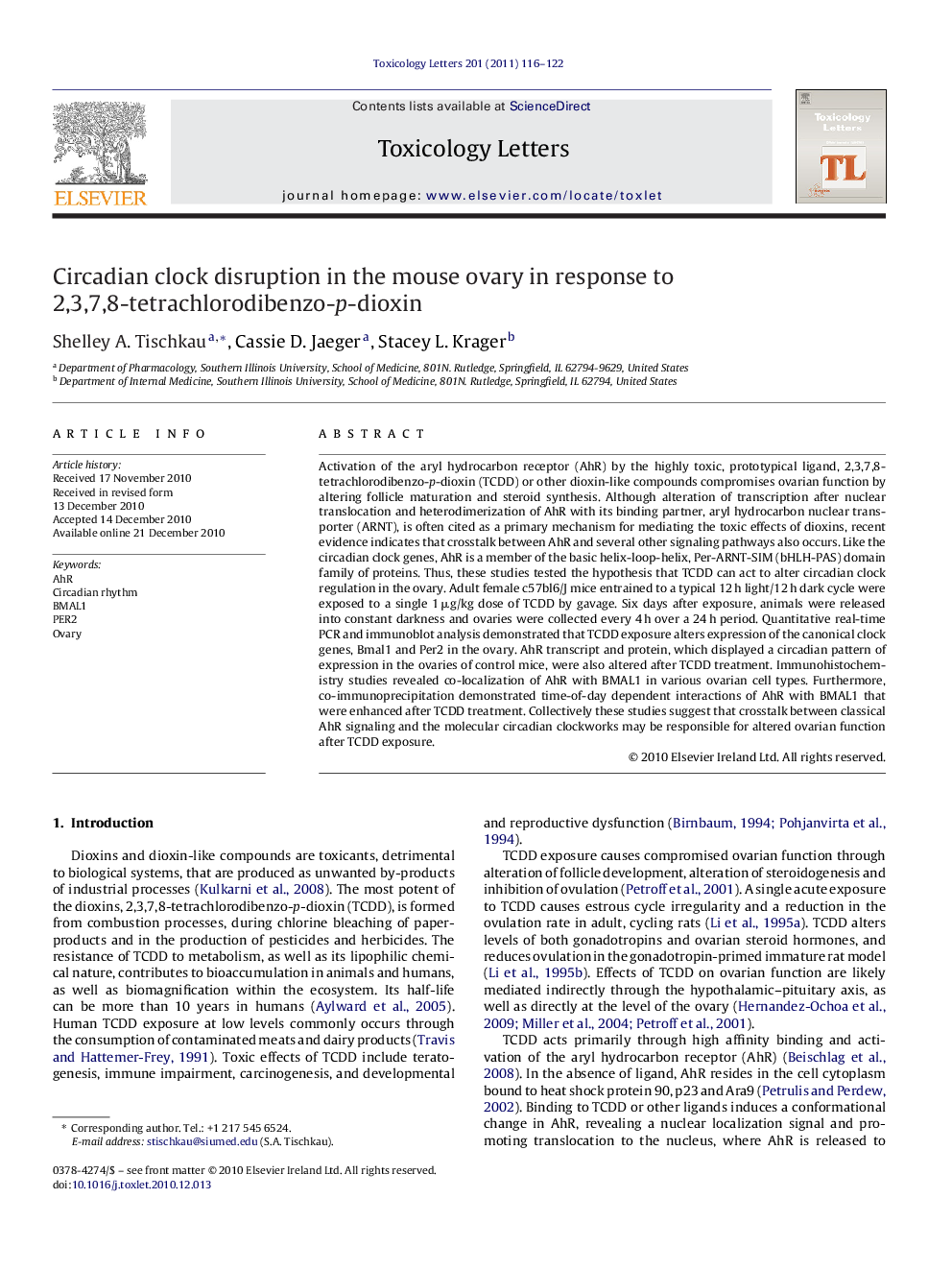| کد مقاله | کد نشریه | سال انتشار | مقاله انگلیسی | نسخه تمام متن |
|---|---|---|---|---|
| 2599962 | 1133243 | 2011 | 7 صفحه PDF | دانلود رایگان |

Activation of the aryl hydrocarbon receptor (AhR) by the highly toxic, prototypical ligand, 2,3,7,8-tetrachlorodibenzo-p-dioxin (TCDD) or other dioxin-like compounds compromises ovarian function by altering follicle maturation and steroid synthesis. Although alteration of transcription after nuclear translocation and heterodimerization of AhR with its binding partner, aryl hydrocarbon nuclear transporter (ARNT), is often cited as a primary mechanism for mediating the toxic effects of dioxins, recent evidence indicates that crosstalk between AhR and several other signaling pathways also occurs. Like the circadian clock genes, AhR is a member of the basic helix-loop-helix, Per-ARNT-SIM (bHLH-PAS) domain family of proteins. Thus, these studies tested the hypothesis that TCDD can act to alter circadian clock regulation in the ovary. Adult female c57bl6/J mice entrained to a typical 12 h light/12 h dark cycle were exposed to a single 1 μg/kg dose of TCDD by gavage. Six days after exposure, animals were released into constant darkness and ovaries were collected every 4 h over a 24 h period. Quantitative real-time PCR and immunoblot analysis demonstrated that TCDD exposure alters expression of the canonical clock genes, Bmal1 and Per2 in the ovary. AhR transcript and protein, which displayed a circadian pattern of expression in the ovaries of control mice, were also altered after TCDD treatment. Immunohistochemistry studies revealed co-localization of AhR with BMAL1 in various ovarian cell types. Furthermore, co-immunoprecipitation demonstrated time-of-day dependent interactions of AhR with BMAL1 that were enhanced after TCDD treatment. Collectively these studies suggest that crosstalk between classical AhR signaling and the molecular circadian clockworks may be responsible for altered ovarian function after TCDD exposure.
Journal: Toxicology Letters - Volume 201, Issue 2, 5 March 2011, Pages 116–122